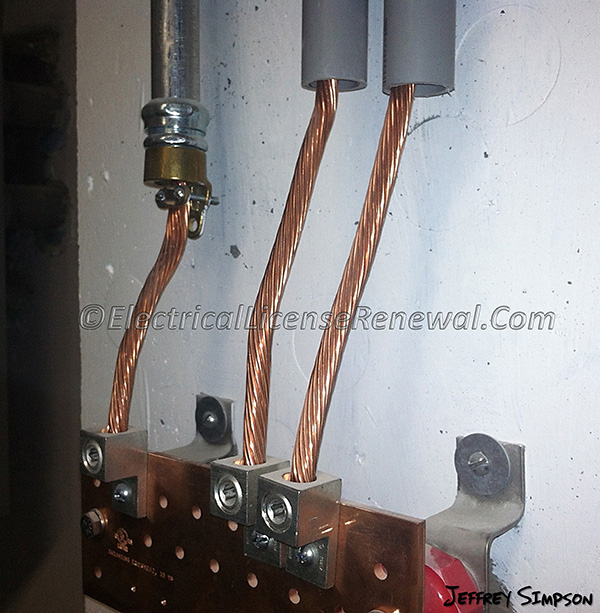250.64(B) Securing and Protection Against Physical Damage.

Code Change Summary: Methods to secure and protect a grounding electrode conductor (GEC) have been revised.
The previous code language describing proper securing and protection from physical damage was a bit confusing and required a careful read in order to properly apply the code section.
The new 2017 revision to the section places all of the requirements into a list format and adds the suffix “XW” to the allowance to protect a GEC with type RTRC conduit. Now, if Type RTRC conduit is used to protect a GEC from physical damage, it must be Type RTRC-XW. The informational note in 355.10 makes it clear that Type RTRC-XW, is identified for areas of physical damage.
Also, a new requirement was added for GEC’s in contact with the earth to make it clear that even though the burial depth Table 300.5 does not apply to GEC’s, if subject to physical damage, a GEC in contact with the earth must now be buried or otherwise protected.
Below is a preview of Article 250. See the actual NEC® text at NFPA.ORG for the complete code section. Once there, click on their link to free access to the 2017 NEC® edition of NFPA 70.
2014 Code Language:
250.64(B) Securing and Protection Against Physical Damage.
Where exposed, a grounding electrode conductor or its enclosure shall be securely fastened to the surface on which it is carried. Grounding electrode conductors shall be permitted to be installed on or through framing members. A 4 AWG or larger copper or aluminum grounding electrode conductor shall be protected if exposed to physical damage. A 6 AWG grounding electrode conductor that is free from exposure to physical damage shall be permitted to be run along the surface of the building construction without metal covering or protection if it is securely fastened to the construction; otherwise, it shall be protected in rigid metal conduit RMC, intermediate metal conduit (IMC), rigid polyvinyl chloride conduit (PVC), reinforced thermosetting resin conduit (RTRC), electrical metallic tubing EMT, or cable armor. Grounding electrode conductors smaller than 6 AWG shall be protected in (RMC), IMC, PVC, RTRC, (EMT), or cable armor. Grounding electrode conductors and grounding electrode bonding jumpers shall not be required to comply with 300.5.
2017 Code Language:
250.64(B) Securing and Protection Against Physical Damage.
Where exposed, a grounding electrode conductor or its enclosure shall be securely fastened to the surface on which it is carried. Grounding electrode conductors shall be permitted to be installed on or through framing members.
(1) Not Exposed to Physical Damage. A 6 AWG or larger copper or aluminum grounding electrode conductor not exposed to physical damage shall be permitted to be run along the surface of the building construction without metal covering or protection.
(2) Exposed to Physical Damage. A 6 AWG or larger copper or aluminum grounding electrode conductor exposed to physical damage shall be protected in rigid metal conduit (RMC), intermediate metal conduit (IMC), rigid polyvinyl chloride conduit (PVC), reinforced thermosetting resin conduit Type XW (RTRC-XW), electrical metallic tubing (EMT), or cable armor.
(3) Smaller Than 6 AWG. Grounding electrode conductors smaller than 6 AWG shall be protected in RMC, IMC, PVC, RTRC-XW, EMT, or cable armor.
(4) In Contact with the Earth. Grounding electrode conductors and grounding electrode bonding jumpers in contact with the earth shall not be required to comply with 300.5, but shall be buried or otherwise protected if subject to physical damage.